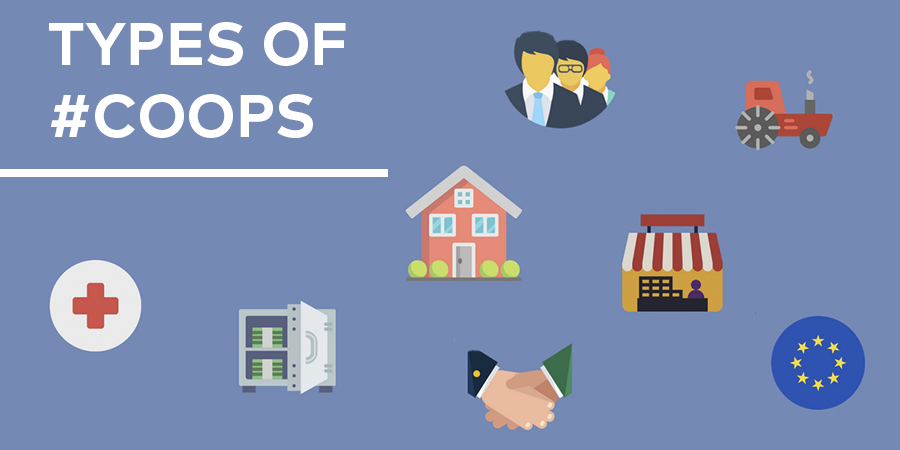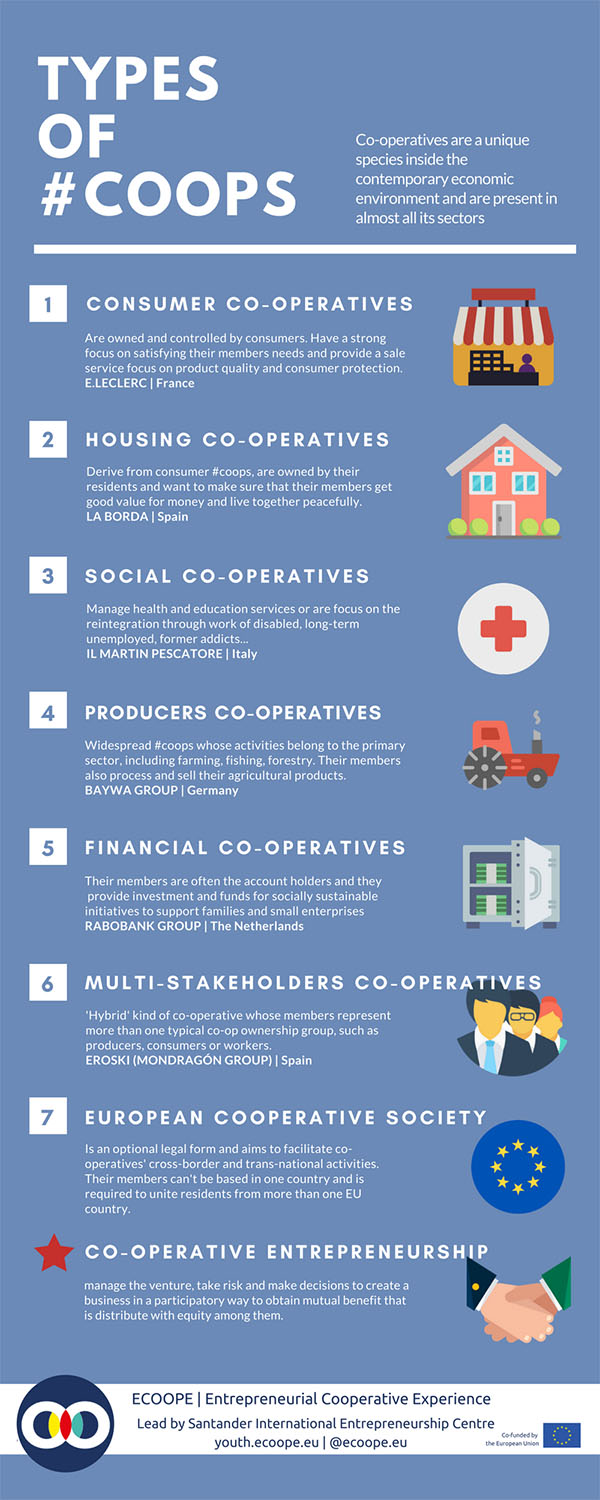
25 Ago Types of co-operatives
Now that we know what is a co-operative, we want to go a bit further and explain, as short and sweet as possible, the types of co-operatives. It’s important to point out that co-operatives are a unique species inside the contemporary economic environment. They are present in almost all its sectors and are the primary context in which co-operative entrepreneurs are active” (Entrepreneurs and the context of cooperative organizations: a definition of cooperative entrepreneur, November 2013).
That’s because the co-operative business model can be applied in many activities: “In traditional sectors, like agriculture, fisheries, consumer and financial services, housing and production (workers’ co-operatives). Co-operative activity also spans many activities including car-sharing, childcare, health and social care, funerals, music, schools, sports, tourism, utilities (electricity, water, gas, etc.) and transport (taxis, buses, etc.)” (Euricse Co-operative Enterprises, 2013).
It must be noted that in recent years, co-operatives are popping up in other non-traditional fields, like renewables or technology. That’s because innovation is an asset for the co-operative sector, that is constantly developing “innovative ways of applying co-operative principles to meet new social and economic needs” (What is a co-operative? Co-operatives UK).
Due to all this, labelling co-operatives can be a bit tricky but here’s a brief description of the different types of #coops according to their organizational scheme or how their members function within it:
1): Consumer: enterprises owned and democratically controlled by consumers. They have a strong focus on satisfying their members’ needs and can also provide a sale service focus on product quality and consumer protection.
E.Lecrec (France): http://www.mouvement.leclerc/le-mouvement.
2): Housing: derive from consumer co-operatives, are owned by the residents and look after the various stages of the house-building process. Their goal? Make sure members get good value for money and live together peacefully.
La Borda (Barcelona, Spain): http://www.laborda.coop/es/
3): Social: they undertake the management of health and education services or they focus on the reintegration through work of disabled, long-term unemployed, former addicts, ex-cons…
Il Martin Pescatore (Italy): http://www.ilmartinpescatore.org/chi-siamo
4): Producers: this widespread type of co-operative focus on activities that belong to the primary sector (farming, fishing, forestry…) and their members also process and sell their agricultural products.
CHS inc (United States of America): http://www.chsinc.com/our-company/about-us
5): Financial: members are often the account holders and they provide investment and funds for socially sustainable initiatives to support families and small enterprises.
Rabobank Group (The Netherlands): https://www.rabobank.nl/particulieren/over-rabobank/?intcamp=pa-footer-rabobank&inttype=link-over.rabobank&intsource=particulieren.divers
6): Multi-stakeholder: it members can be employees, users, consumers, and it has specific roles and rights for the different types of members. They can be producer / consumer or consumer / worker.
Sidenote: Worker – consumer #coops like Eroski (grocer co-operative part of Mondragón Group in Spain) are an emerging model: https://www.eroski.es/quienes-somos/
7): SCE (European Cooperative Society): is an optional legal form and aims to facilitate co-operatives’ cross-border and trans-national activities. The members can’t be based in one country and is required to unite residents from more than EU country.
(BONUS) Cooperative entrepreneurship: define by Díaz-Foncea and Marcuello as a “group who manage the venture creation process, take risk and make judgmental decisions to create a business in a participatory way with the objective of obtaining mutual benefit to be distributed with equity among them”. Also in Entrepreneurs and the context of cooperative organizations, they say that it happens in different industries such as technology, services and agriculture.




No Comments